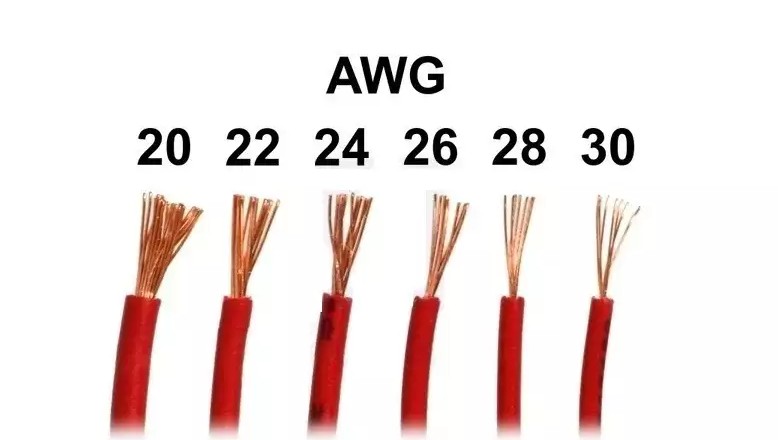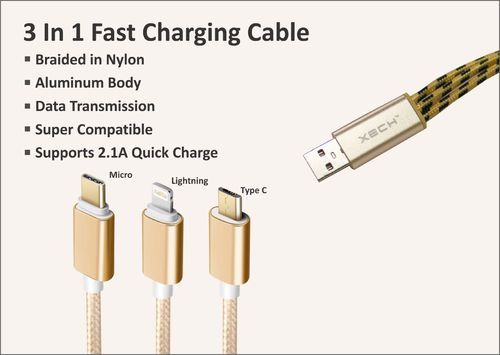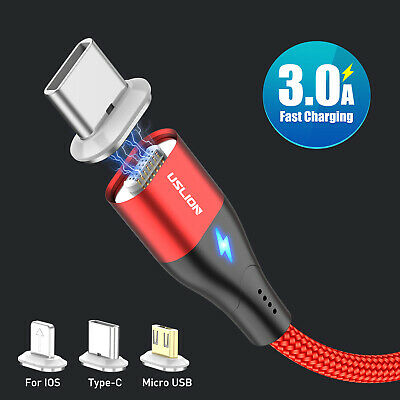While fast charging technology may be built into your device by default, the accessories you use to charge your devices also go a long way in determining how fast (or slow) your device charges. Cables vary in terms of how fast they charge, durability, length, price, and other factors.
Fast charging cables vs. Regular cables
There are different types of USB cables even though they are not exactly easy to tell apart, physically. And yes, USB cables can also impact how quickly your device’s battery would get to 100%. Typically, to enjoy the fast charging speed of a device with quick charging technology, you must ensure that you’re also using a fast charging power brick and a fast charging cable. But what differentiates a regular cable from a fast charging cable? The amount of power sent to your device’s battery at a given time. Compared to regular cables, fast charging cables are able to send more current to fill up your battery’s capacity quicker than a regular cable. Regular USB cables send about 2.5 watts of power to your smartphone’s battery while fast charging cables (depending on the manufacturer and your model of your smartphone) can send as high as 120W or power to your battery. Xiaomi’s Super Charge Turbo charger, for example, comes with a fast cable that can supply as high as 100W to a battery. Vivo’s FlashCharge, which is capable of charging 4,000mAh battery in 13 minutes, comes with a fast charging cable that can send up to 120W of power to a battery. If you use a regular USB cable to charge and a fast charging power brick/adapter to charge a smartphone, you will definitely not get fast charging speed. This is because the regular cable is limited in the amount of power it can send to a device.
Why are fast charging cables “fast”?
As mentioned earlier, how fast a cable charges depends on the amount of power yhe cable.is built to carry. This is equally dependent on the size of the wire inside the cable; it’s simple physics. The wires you’d find inside a regular USB cable are usually standard-sized 28 guage wires while fast charging cables have bigger/thicker 24 guage wires which allows for more current to be supplied to a battery of the same size. See the image below for better pictorial representation of the size difference between a 28 guage wire and a 24 guage wire. The standard wires in a regular USB cables can supply about carry about 0.5A of current while fast charging cables are capable of carrying larger currents (2A or more).
Identifying Fast Charging cables
Because all cables have no easily identifiable features that distinguishes them into standard and regular cables, it is always difficult to tell a regular cable from a fast charging cable. Same way it is to differentiate data cables from charge-only cables. Nonetheless, there are still some easy ways to identify a fast charging cable should you need to buy one for your smartphone.
1. Check the label/description
Some cable manufacturers really make it easy for users to tell the type of cable they are about to spend money on. When picking up a cable, you can check the cable branding, label, or description for anything that points to the cable supporting fast charging. Some cables are properly labor as fast charging/quick charging so (potential) buyers know what they are signing up for.
2. Check for cable amperage
Another thing to look out for on a cable to determine of it is a fast charging cable is the amperage. As earlier mentioned, fast charging cables are capable of carrying larger currents of 2A or more. That said, if you need to buy a fast charging cable, be sure to pick out one labelled to support 2A of current or the specific current that enables your smartphone charge rapidly.
3. Thicker cables
Because fast charging cables have thick wires inside of them, it is commonly believed that thicker cables charge faster than their slim cable. This is sometimes true but it is not exactly an effective way of identifying a fast charging cable. However, for obvious reasons, you should shy away from purchasing ridiculously thin cables.
4. Buy from official/certified stores
In a nutshell, if you have a smartphone that charges rapidly, having a fast charging cable is just as important as having a fast charging power adapter. They go hand in hand. It can get pretty confusing understanding why a cable charges faster than another but I hope it’s pretty clear now.





